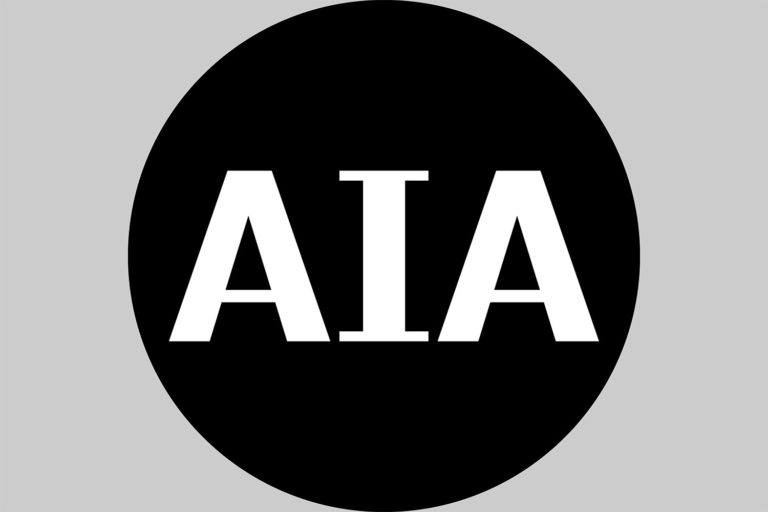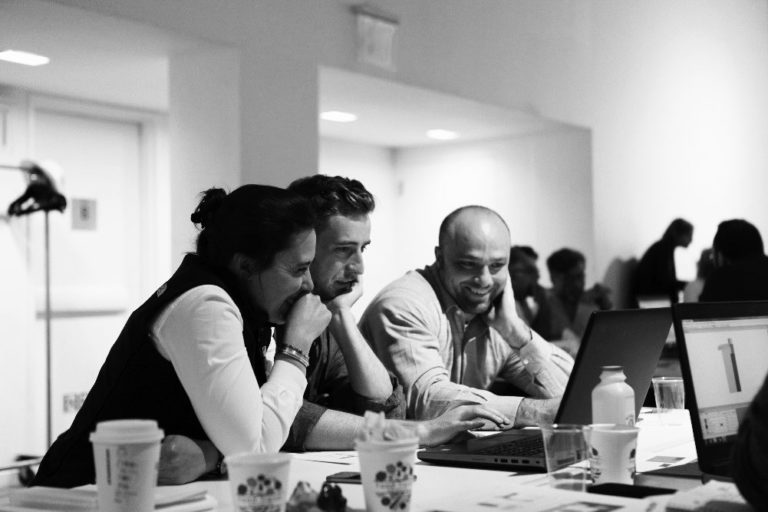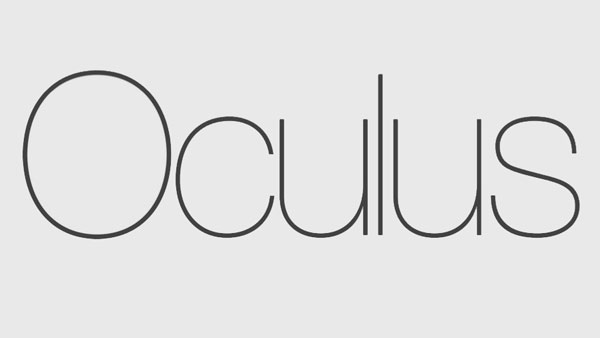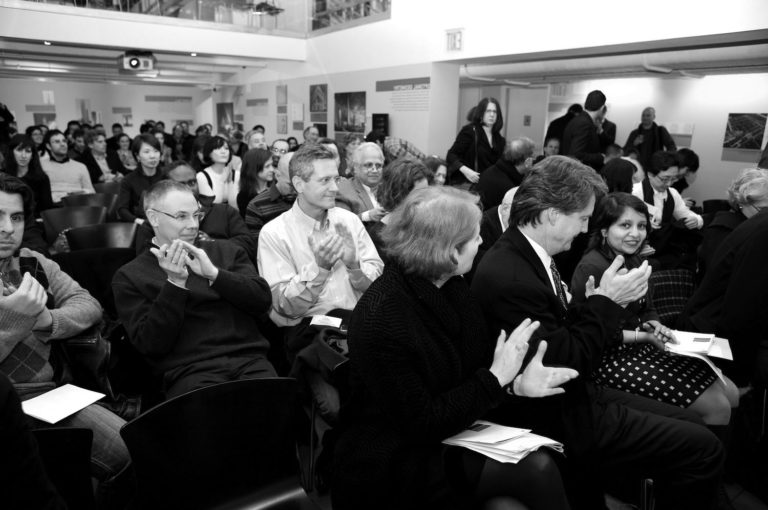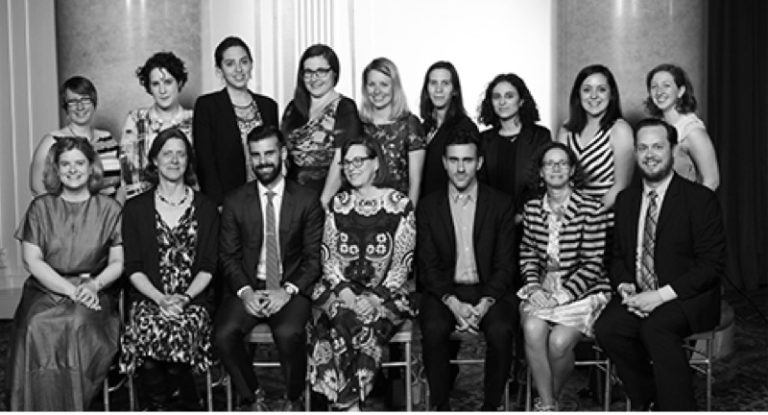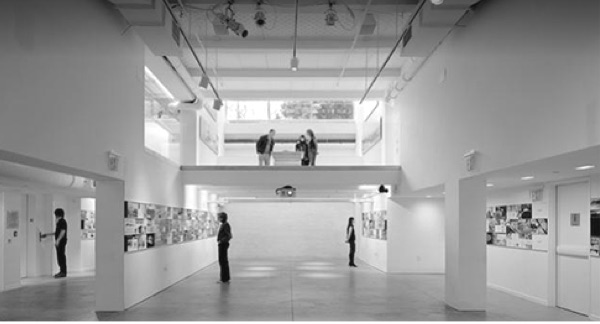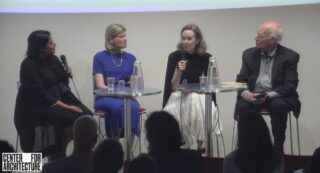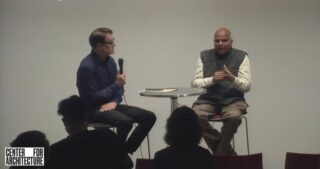Info
Related Links
Topics
-
November 18, 2025
![Photo: Francis Wu]() Photo: Francis Wu
Photo: Francis WuAlan Chan, Associate at di Domenico + Partners, traced the evolution of the Chinatown Night Market at our October committee meeting. Chinatown Night Market is a grassroots activation launched in 2021 to reclaim Forsyth Plaza as a safe and welcoming gathering place during a moment of crisis. The market came out of the Van Alen Institute and Urban Design Forum Neighborhoods Now initiative, in collaboration with di Domenico + Partners, Think!Chinatown, and Asian Americans for Equality (AAFE). The initiative transformed the underused plaza into a vibrant cultural space using community-led, iterative design. Alan shared how partnering with local organizations lead to unstructured engagement with community members that shaped culturally relevant programming that was tailored specifically to Chinatown. Furthermore, each iteration of the market was informed by insights gained from observations and intercept surveys to improve crowd flow and better activate the existing plaza.
A major theme was capacity-building and advocacy. Alan and team created templates, workflows, and planning tools that enabled community partners to run the market independently, while collecting metrics to demonstrate its social and economic impact. The project illustrates how public-space activations can be both inclusive and adaptive, amplifying community voices and showing the city what infrastructure and support are needed. The Chinatown Night Market ultimately stands as a model for responsive, culturally grounded placemaking rooted in collaboration, observation, and continuous refinement.
Photographer: Francis Wu
-
November 2, 2025
![Image: Becoming rent ABLE]() Image: Becoming rent ABLE
Image: Becoming rent ABLEAt September’s Social Science and Architecture Committee meeting, Lorraine Woodward, Founder and CEO of Becoming rentABLE, spoke from her own experience as a person with a disability and as part of a family that has long dealt with the limits of accessibility. Her organization identifies and verifies accessible short-term rentals, setting clear criteria that help travelers find housing suited to different physical and neurodiverse needs. From this perspective she showed how thoughtful design enables freedom, independence and participation, and how its absence limits them. Drawing on stories from families she has met through her work, she showed how verified accessible rentals can be life-changing, restoring independence and freedom of movement. Her platform addresses a major gap in the short-term rental market: out of 1.5 million listings, only about 1,500 are accessible. Woodward explained that accessibility is not a fixed state but a range of needs covering mobility, vision, hearing, neurodiverse and age-related conditions that require adaptable design. She noted that many improvements can be made flexibly and at reasonable cost, tailored to individual properties, showing that inclusion creates measurable economic value. She pointed out that accessibility is becoming a significant growth field as demographic change increases demand for adaptable housing and travel options. Her talk invited the group to look beyond the limits of inaccessibility and to see the opportunities in inclusive design. She also offered to share material for future workshops to strengthen knowledge and practice in accessibility. Her work showed the committee how a hands-on and well-structured approach to accessibility can achieve tangible results at an impressive scale. We thank Lorraine Woodward for sharing her inspiring work and perspective with our committee.
-
September 23, 2025
![Image: Sarah Kenney]() Image: Sarah Kenney
Image: Sarah KenneyAt our August meeting, we were pleased to feature Committee member Sarah Kenney, designer and researcher, whose work investigates the global cut-flower industry through an architectural lens. She holds master’s degrees in both architecture and landscape architecture and has presented her research internationally and published on the topic, showing how architectural analysis can reveal hidden social and political systems. Her talk, Conflict Bloom – Flowers Under Siege in Kenya’s Lake Naivasha Region, introduced the framework of Floritecture as an approach to examining the designed and controlled spaces of flower production. Informed in part by an early background in floristry, she brought a first-hand sensitivity to flowers as materials of design and labor. Drawing on her on-the-ground research in Naivasha, she showed how the lightweight construction of the greenhouses and the infrastructure of roads, power lines and water systems extend well beyond the farms into surrounding settlements. Houses have been built along these networks, making clear how production landscapes and material practices shape everyday life and exposing the contradictions of an industry where beauty and violence, empowerment and inequality coexist. Her presentation sparked an intensive discussion on the broader structures behind global trade, a theme that continues to engage the Committee. We thank Sarah for the unique insight she shared through her framework of Floritecture and her field research, which provided a distinctive perspective and illuminated how global supply chains shape social and material realities.
-
September 2, 2025
![Image: Busra Berber.]() Image: Busra Berber.
Image: Busra Berber.At our June meeting, we welcomed Busra Berber, architect and PhD researcher at The Bartlett, UCL. Her doctoral project, Sensory Experience in Human–Building Interaction, investigates how media architecture and digitally enhanced environments shape emotional and sensory experience. Using physiological data such as heart rate and skin temperature, she develops methods for quantifiable evidence of visitor responses, measuring and interpreting emotional effects in architectural settings. Positioned within the field of Human-Building Interaction, her work focuses on exhibitions and immersive installations, where she explores how visitors react to media-integrated spaces. While her research is grounded in these specific contexts, the findings open broader perspectives on designing sensory-driven and human-centered environments. The presentation sparked a lively exchange within the committee, with members reflecting on how these methods might inform practice and research in architecture more broadly. We thank Busra Berber for sharing her work and engaging with the committee in such an inspiring way.
-
June 20, 2025
![Image by: What Design Can Do]() Image by: What Design Can Do
Image by: What Design Can Do![Image by: AIA SS+A]() Image by: AIA SS+A
Image by: AIA SS+A![Image by: AIA SS+A]() Image by: AIA SS+A
Image by: AIA SS+A![Image by: AIA SS+A]() Image by: AIA SS+A
Image by: AIA SS+A![Image by: AIA SS+A]() Image by: AIA SS+A
Image by: AIA SS+A![Image by: AIA SS+A]() Image by: AIA SS+A
Image by: AIA SS+A![Image by: AIA SS+A]() Image by: AIA SS+A
Image by: AIA SS+AAIANY’s Social Science and Architecture Committee Launches “What Design Can Do” Film Series with Insightful Discussion
by Sarah Kenney
On April 1, 2025, the American Institute of Architects New York (AIANY) Center for Architecture hosted the first installment of its three-part series titled What Design Can Do. Organized by the AIANY Social Science and Architecture Committee, the event featured a screening of the short film What Design Can Do, created by architectural critic and scholar Sarah Williams Goldhagen and architect Sarah Robinson. The film highlights the powerful role of architecture and evidence-based design in promoting human health and wellbeing—emotionally, cognitively, and physically—through the lens of neuroaesthetics.
Nadine Berger, Global Associate and U.S. East Lead at iLAB | Buildings + Places and Sustainability Director for Urbanism, Advisory + Planning (UAP), opened the evening with introductory remarks. Berger framed the event as the beginning of a broader conversation about the ways in which design can serve as a tool for public health. With approximately 60 attendees—primarily architects, but also members of the general public—the hybrid event emphasized the growing public interest in the intersection of neuroscience, architecture, and wellness.
What Design Can Do urges viewers to see architecture not as a purely aesthetic endeavor but as a critical component of public health infrastructure. The film introduces the concept of neuroaesthetics—the study of how environmental aesthetics affect the brain—and presents examples of spaces that foster healing, learning, and community cohesion. The film also delves into biophilic design, showing how features such as natural light, greenery, and outdoor views can reduce anxiety, speed up healing, and lead to measurable cost savings in healthcare settings. As Goldhagen narrates in the film, “Design heals—when done well, it can remap the brain for better outcomes.”
The film Illustrated these ideas through multidisciplinary case studies, including the design of Maggie’s Cancer Centre, where the layout provides comfort and emotional reprieve through spatial arrangement. Other featured examples include a UK school study in which classrooms designed with neuroaesthetic principles reportedly increased student learning gains by an additional academic year over the traditional model. Urban and housing projects in New York City and London were also cited as successful models for how community-centered planning can create restorative, interactive environments in historically underserved areas.
Following the film screening, the discussion was moderated by Ian Wach, Design and Construction Project Manager at About the Work. The conversation focused on how the medium of film can be used to communicate spatial experiences that are often difficult to translate through words or static visuals. Wach invited Goldhagen to reflect on her process as a filmmaker, asking, “How do you communicate the impact of space when it’s so inherently experiential?” Goldhagen responded, “We didn’t want to make it about the architect. We wanted the buildings to become the characters in the film.” She emphasized the importance of visual storytelling in making research-driven design accessible to a wider audience.
The public Q&A session focused on two key themes: the need for greater collaboration between scientists and designers, and the role of building codes in scaling design interventions. Goldhagen expressed concern over the disconnect between academic research and architectural practice. “Architects can become the intermediaries between neuroscientists and built outcomes,” she said, urging the profession to more actively partner with researchers. She also proposed that building codes evolve to include biophilic and neuroaesthetic principles, ensuring that these beneficial strategies become standard practice rather than isolated innovations.
The evening concluded with a hopeful outlook: a call for more integrated design practices that prioritize the human experience from the start. “We need to reframe design not as luxury, but as essential to our mental and physical health,” Goldhagen noted.
Speaker Bios
Sarah Williams Goldhagen, Ph.D. is a former Harvard professor and a leading voice in neuroaesthetics and architectural criticism. She serves on the Executive Advisory Board of the International Arts + Mind Lab at Johns Hopkins School of Medicine and the boards of the Academy of Neuroscience for Architecture (ANFA) and the Centre for Conscious Design. Her book Welcome to Your World received the 2017 Nautilus Book Award for its contributions to social and environmental justice.
Ian Wach is a Design and Construction Project Manager at About the Work, where he leads initiatives focused on design equity and inclusive development. Wach has a background in architecture and project management, with experience bridging design and advocacy.
Upcoming Events
Join the AIANY Social Science and Architecture Committee for the second installment of What Design Can Do later this spring. These events are open to professionals and the public alike. Visit calendar.aiany.org for details and registration.
About the Author
Sarah Kenney is an architectural designer based in Manhattan. With a background in landscape and critical research, Sarah focuses on the intersections of design, research, and social equity.
Past Events
-
Wed, 7/16/25, 6:00pm
-
Thu, 6/26/25, 5:30pm
-
Thu, 5/15/25, 6:00pm
-
Tue, 4/1/25, 6:00pm
-
Mon, 7/8/24, 6:00pm
